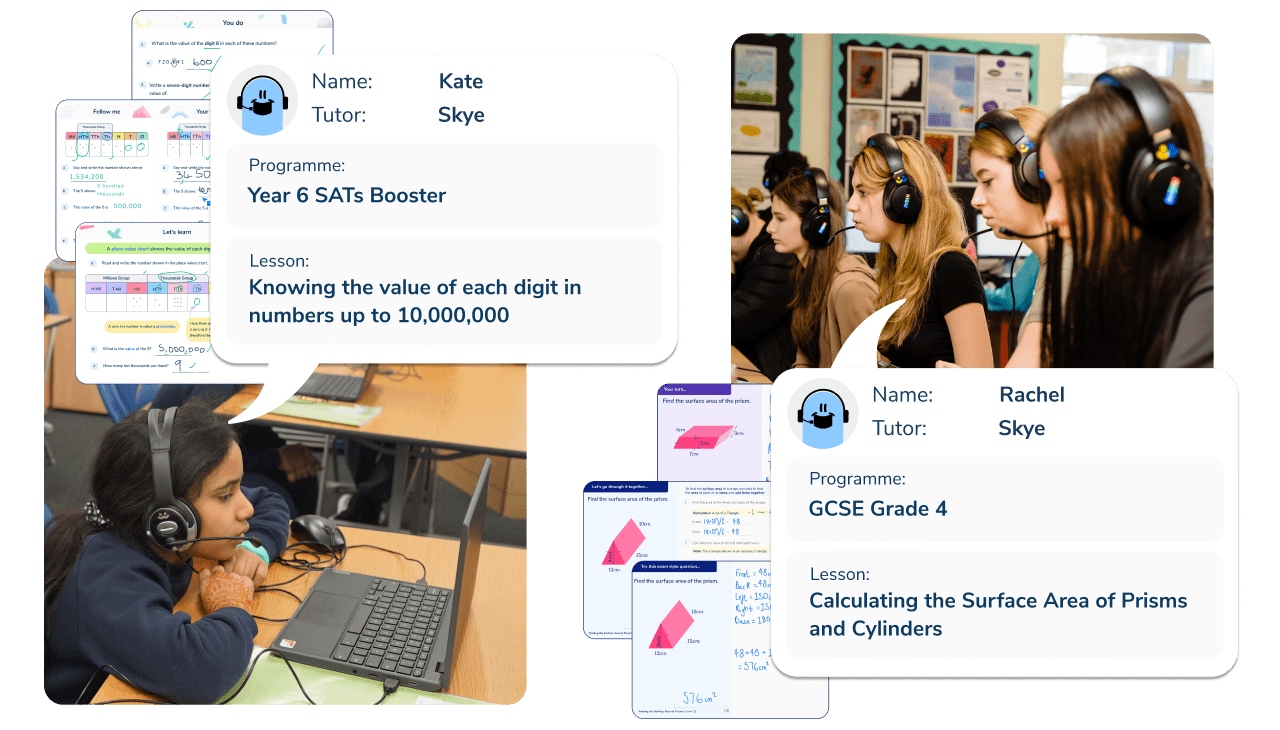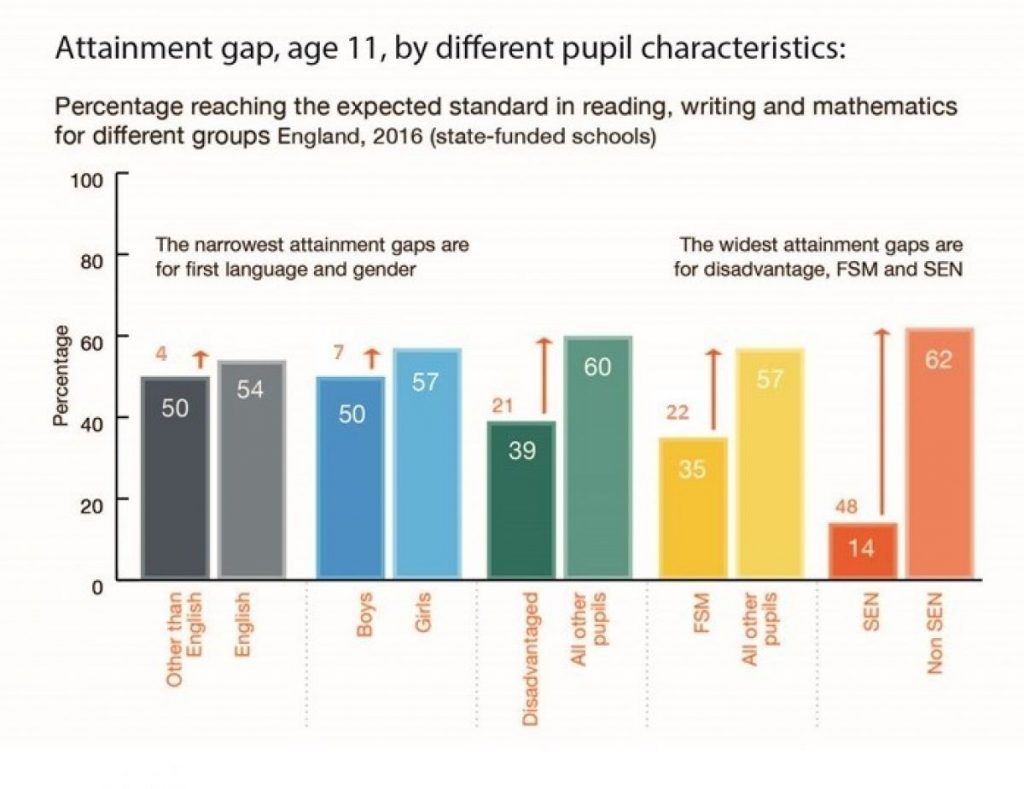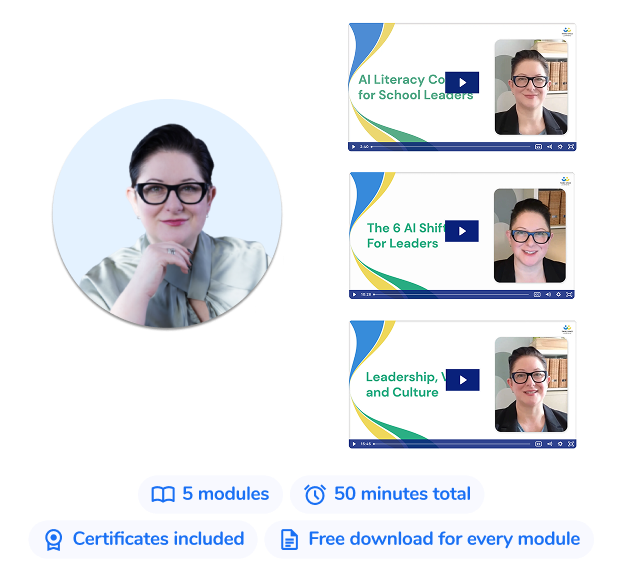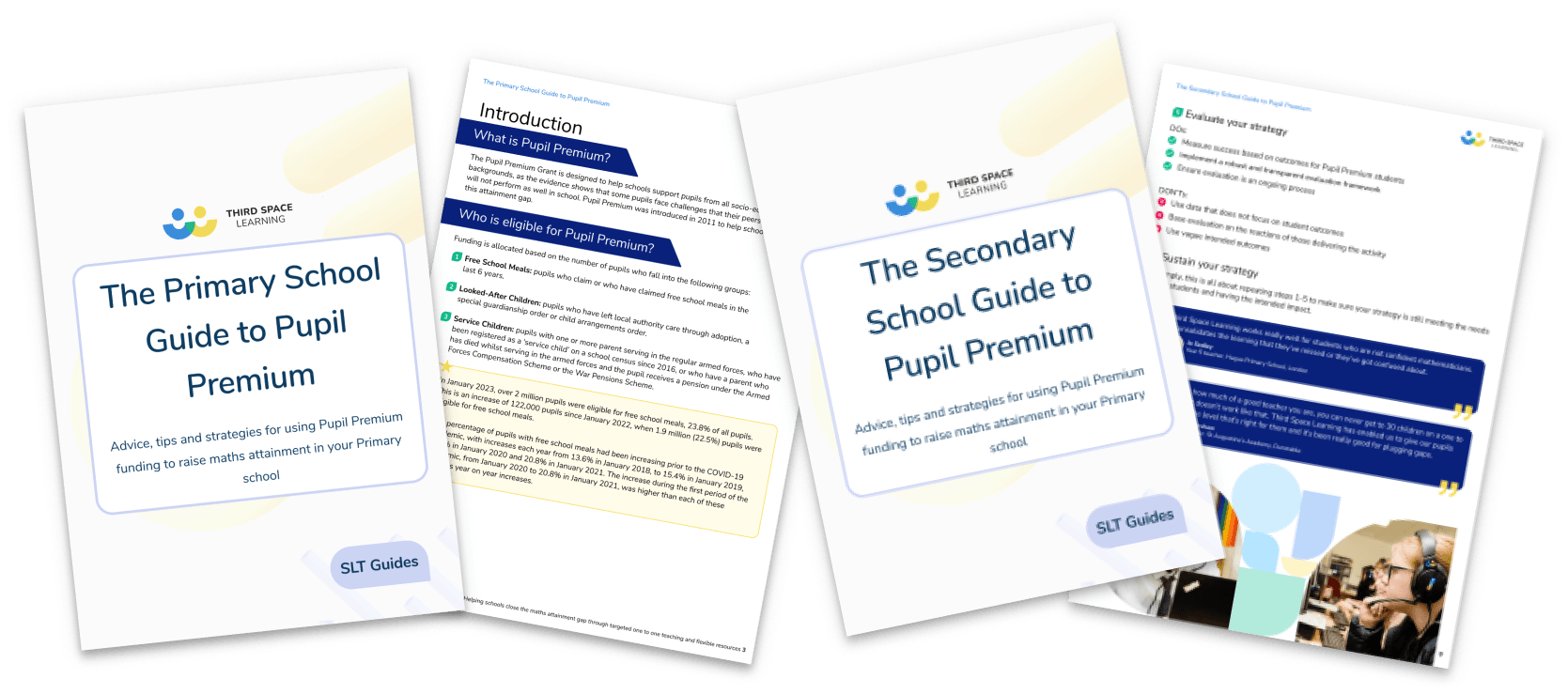Pupil Premium: A Guide for School Leaders On Closing the Attainment Gap In Your School
Pupil premium funding is a key part of a school’s yearly budget to measurably and positively impact educational outcomes for pupils from disadvantaged backgrounds.
What Is Pupil Premium?
Pupil Premium funding is a per-child grant given to around a quarter of all pupils in state-funded schools in England. It is intended to reduce the academic attainment gap between disadvantaged children and their peers.
It was introduced by the Department for Education in 2011 in recognition of research showing children from low-income backgrounds perform less well at school than others. A similar scheme, the Pupil Deprivation Grant, was introduced the following year in Wales.
Since April 2021, when £1.25 billion was allocated to schools, there have been many changes to the policy and funding.
While many poorer pupils are high achievers, statistically there are groups of children that face additional challenges. Pupil premium is awarded in recognition that these may impact their educational outcomes.
For some, this barrier is primarily one of low income so funding is given to pupils from poorer households who receive free school meals (FSM). Any pupil who receives FSM, or has done so in the last six years, qualifies for Pupil Premium funding.
Although all pupils in England receive free school meals in EYFS and KS1, pupils must meet criteria to receive FSM in KS2 and beyond.
The Senior Leader’s Guide to Pupil Premium
Use this guide to make informative and concise pupil premium spending choices for all the children in your care
Download Free Now!Who is eligible for pupil premium and how much funding do schools receive?
Pupil premium funding is not ring-fenced for individual eligible pupils, although your local Virtual School Headteacher is accountable for the Looked After Children funding.
The eligibility criteria have changed over the years and it is worth checking year-on-year.
Those eligible in 2025/2026 are:
- Pupils who are recorded as eligible for free school meals, or have been recorded as eligible in the past 6 years, including eligible children of families who have no recourse to public funds (NRPF)
- Children looked after by local authorities, referred to as looked-after children,
- Previously looked after children by a local authority or other state care
- A Service child pupil premium is available for children who have parents serving in the Armed Forces
This data is captured through the school census, making it even more important to accurately identify these pupils. Some are harder to identify than others, such as previously looked after children.
It’s beneficial to communicate regularly, and through all mediums, to parents and carers. Evidence can be brought into school and redacted so that these children can be supported.

Meet Skye, the voice-based AI tutor making maths success possible for every student.
Built by teachers and maths experts, Skye uses the same pedagogy, curriculum and lesson structure as our traditional tutoring.
But, with more flexibility and a lower cost, schools can scale online maths tutoring to support every student who needs it.
Watch Skye in actionHow much is pupil premium?
Pupil premium funding can change from year to year. Here’s a guide to pupil premium funding allocations from the 2016/17 academic year through to 2024/25.

Find further information on pupil premium funding for each financial year at gov.uk.
Early Years Pupil Premium
Additional funding is awarded to pre-school children to improve their education in settings such as nurseries, schools and childminders.
Early years pupil premium is for 3 and 4-year-olds who:
- Are living in England and have left care under an adoption order or a special guardianship order
- Their parent or carer receives one of the qualifying benefits such as Universal Credit or Jobseeker Allowance
It is currently set at £353 per child and can be used for interventions such as speech and language therapy.
Since 2013, Third Space Learning has been helping school budgets stretch further through scalable, cost-effective one to one maths tutoring.
One to one maths sessions with AI tutor Skye are 90% cheaper than other tutoring providers.
Most schools use Pupil Premium funding to help cover the cost of Third Space Learning tutoring.
READ MORE: Pangbourne Primary School explains how the tutoring works for their pupil premium children
What Is Pupil Premium Plus?
Pupil premium plus refers to previously looked after children adopted from English local authority care. Strong relationships between a school and the Virtual School are important for pupil premium plus as pupil premium is not allocated to the child’s school but to the headteacher of the local authority’s Virtual School.
This group also includes pupils who have left care under a Special Guardianship Order or a Child Arrangements Order (previously known as a Residence Order). By 2021, the Education Policy Institute estimated that 12.7% of children in Year 11 had experienced social care at some point in the previous six years.
Research shows pupils qualifying for pupil premium plus are more likely to suffer disruption to their education as well as to have complex social or emotional needs, alongside other Special Educational Needs. This has a marked effect on their outcomes:
- In 2017, 32% achieved the expected level of reading, writing and maths at the end of Key Stage 2 compared to the national average of 61%
- In 2021, looked-after children were 2.3 grades behind their peers in GCSE English and maths
In an attempt to improve the outcomes of this group, more funding is granted for these pupils. In the 2024/25 financial year, the amount is £2,570.
Why do schools need pupil premium?
Pupils from different backgrounds do not leave education with the same educational outcomes as others.
Whilst there are a multitude of factors contributing to this, many of which are contextual and arguably beyond the influence of schools, there are clear trends and patterns.
An attainment gap between disadvantaged pupils and young people is evident and schools must try raising attainment in maths and other curriculum subjects. This includes pupils from lower socioeconomic backgrounds.
The Education Endowment Foundation’s (EEF) Attainment Gap Report found:
- By the age of 5, the gap between children from well-off backgrounds and their classmates is already established.
- The gap gets considerably worse over the next 11 years of their education.
- When children start school the relative outcomes of pupils from disadvantaged backgrounds when compared to their non-disadvantaged peers is 4 months
- By the end of primary school, this has more than doubled to 9 and a half months
- At the end of secondary school, the gap more than doubles again to 19 months
An EEF evidence review updated in May 2022 concluded that:
- Whilst the attainment of all pupils have been impacted by the pandemic, the impact is greater for young people from disadvantaged backgrounds
- Evidence shows that the gap between disadvantaged children and their peers has grown
- Children in Key Stage 1 have been the most significantly impacted.
- Research by the DfE shows that the most significant impact was in Key Stage 3
- Most evidence finds that although there has been some recovery since the pandemic, the current attainment in maths and English is below pre-penadeic levels for all pupils.

What can pupil premium be spent on?
The pupil premium grant is paid to maintained schools and academies in order to meet the following objectives:
- Raise the educational attainment of disadvantaged pupils of all abilities to help them reach their potential
- Provide support for children and young people with parents in the regular armed forces
This emphasises the importance of having a coherent and contextualised pupil premium strategy.
Interventions should be based upon the challenges faced by eligible pupils in your school. There is a wide menu of approaches out there, start with reliable sources such as the Education Endowment Foundation’s teaching toolkit.
The Education and Skills Funding Agency conditions of grant identifies the following as permitted use of the funding:
- For the benefit of pupils registered at the school that receives it
- To benefit of pupils registered at other state funded schools or academies – for example, when hosting summer schools which welcome pupils from other schools
- Community services whose provision furthers the benefit of pupils at the school – for example, where Virtual Heads (responsible for LAC PP grant) deem it beneficial to do so, such as art therapy outside of the classroom, or training of local authority staff to raise awareness of LAC
Funds can also be used to benefit pupils who are not eligible for the funding but would benefit from additional support, for example, young carers.
It may also be used to fund whole class teaching approaches and training that benefit on-disadvantaged pupils such as high-quality teaching strategies or CPD for teaching staff on what cognitive science tells us about good teaching and learning.
LAC funding can be pooled to positively impact on all pupils in the Local Authority, although it must not be used to fund services that the LA is statutory responsible for finding such as school uniforms and free school transport.
It is highly recommended that the senior school leader responsible for Looked After Children in your school and the one developing the pupil premium strategy work closely together and forge a positive working relationship with your local Virtual School Headteacher.
While there is a lot of freedom in the menu of approaches for pupil premium spending, school leaders should consider the context of the school. Senior leaders should match the appropriate strategies to tackle those barriers to learning.
Pupil premium funding best practices
One great benefit of schools having to report on how they are spending Pupil Premium funding is the sharing of ideas of what has been shown to work. Resources from the DfE are available to those working on their pupil premium strategy.
Some of The best ways that schools have used their funding are imaginative and tailored to the needs of their pupils. Spending is not always about an intervention. For some, attendance, or lack of it, is the biggest barrier to learning.
Some solutions for this include fully funded breakfast clubs, early interventions such as phone calls to parents and carers on the first day of absence, and a system of rewards to encourage school attendance. Even something as simple as giving children an alarm clock can be key to helping them to get to school on time.
Intervention strategies can be less literal than extra maths or spelling sessions. Children in receipt of Pupil Premium are far more likely to have social and emotional difficulties – perhaps as a result of extra carer responsibilities.
Social and Emotional Learning (SEL) programmes can help children deal with these difficulties and positively influence their academic learning. Strategies to raise children’s self-awareness, self-management and social awareness can be taught in tailored classes or as part of whole-class learning. Games such as charades where children have to guess what feeling is being acted or discussions around storybooks can help with this.
Read more: Pupil Premium Awards: What a Winning School Looks Like
The Education Endowment Foundation Toolkit
A starting point for any leadership team considering the menu of approaches is the EEF’s Teaching Toolkit and pupil premium guide.
In this toolkit, the Education Endowment Foundation (EEF) calls good teaching ‘the most important lever schools have to improve outcomes for disadvantaged pupils’.
Good teaching is the most important lever schools have to improve outcomes for disadvantaged pupils”
EEF Pupil Premium Report

Aside from good teaching, the Toolkit provides a high level summary of the various interventions and strategies. Each is ranked by cost and effectiveness (as well as how robust the trial to prove efficacy is).
Another issue to consider is whether the evidence base is limited to a small selection of subjects. For example, many are confined to Maths or Science. The phase within which the evidence comes from is also important. For example, evidence for the positive impact of homework is far stronger in secondary school whereas the evidence for Phonics is far stronger in primary schools.
Many well-established strategies can be discounted through the toolkit, such as setting and which has a very limited evidence base.
Read more: KS2 tutoring
Successful Pupil Premium Strategies
All the research suggests that it’s not how much additional funding a school gets but how effectively it’s used. Some of the most successful pupil premium strategies are low-cost.
Worst practice is to use it to plug the gaps in school funding more generally, which is why Pupil Premium spending has to be transparent and targeted.
Schools that successfully utilised the additional funding were good at collecting data on both groups and individuals and monitoring these results over time. The impact of any current intervention strategy was monitored and those that were not working were adapted or replaced.
Heads and teachers were also effective in identifying the main barriers to learning in disadvantaged children and quick to intervene when progress stalled. They were also able to use existing evidence to judge the effectiveness of different strategies and train the staff to use them as well as ensuring that governors understood the Pupil Premium.
While quality first teaching is essential for raising attainment, in a class of 30 it can be difficult to reach all pupils. One-to-one interventions are still one of the most effective ways to close the attainment gap in maths
Third Space Learning’s one-to-one maths tuition is delivered online for maximum cost-effectiveness for schools using their pupil premium budget.
Find out more about how school leaders can continue tutoring after the end of the NTP funding.
The majority of pupils in the intervention receive pupil premium, and on average, pupils make seven months’ progress in just 14 weeks – double the expected progress with schoolwork alone.
Each pupil receives personalised weekly one-to-one lessons. Every session starts with a diagnostic skill check in to identify pupils’ specific needs. Based on pupils’ answers, Skye adapts its teaching to suit the individual. Those who demonstrate sufficient understanding jump ahead to independent practice and challenge questions. For those who struggle, Skye walks them through the lesson step by step. Each session is followed by a skill check out question to assess pupils’ understanding of the lesson. Teachers receive weekly reports to track the intervention’s impact.

See also: Tutoring Disadvantaged Students
10 Low-cost pupil premium intervention ideas
The best low-cost learning interventions that every school can use, as well as those with little or even a negative effect.
While it is highly unlikely that just one approach will have the desired impact on attainment, strategies that benefit pupil premium pupils are also likely to benefit their non-disadvantaged peers.
Many individual children will have a range of barriers to learning. As such, a focus on the accountability of teachers providing quality first teaching is paramount.
Here are the top 10 in terms of effectiveness and value for money:
- One-to-one tuition
- Metacognition
- Reading comprehension
- Oral language interventions
- Feedback
- Collaborative learning approaches
- Mastery learning
- Peer tutoring
- Phonics
- Homework
Some of the least effective methods, or those that have very little evidence are:
- Setting and streaming
- School uniform
- Aspiration interviews

Read more: What Can Pupil Premium Be Spent On? 10 Effective Strategies
Ofsted and pupil premium
Schools are accountable to the DfE and Ofsted for the impact of their pupil premium allocation. Ofsted inspections focus on disadvantaged pupils, including public domain school performance tables for attainment and attendance compared to their classmates.
Under inspection, school leaders and governors must be able to demonstrate that disadvantaged pupils are progressing with the effective use of pupil premium funding.
Schools with 6 or more eligible children for the pupil premium grant are required to publish an updated annual pupil premium strategy statement. While MATs can pool funding and set a plan implemented across multiple academies, each academy must still publish a pupil premium strategy statement for its pupils.
Every year, pupil premium strategy statements must be published on your website by the 31st December. The DfE samples a selection of these statements, and any Ofsted team will review the document to make a judgement on the provision for pupil premium.
Ofsted’s definition of disadvantaged pupils
There is a subtle, but important, difference between the eligibility for pupil premium funding and Ofsted’s definition of disadvantaged pupils. All colleagues in a school must be aware of this.
Ofsted defines a disadvantaged pupil as one who:
- Has special educational needs and/or a disability
- Meets the definition of a child in need of help and protection
- Receives statutory support from a social worker
- Meets the criteria for Pupil Premium funding:
- Pupils claiming free school meals at any point in the last 6 years
- Looked-after children or previously looked-after children
- Children who left care through adoption or another formal route
- Service children whose families are serving in the Armed Forces.
What will inspectors be looking for?
Before arriving at your school, the inspection team will review your pupil premium strategy statement. This will help inspectors understand your school’s context, in particular:
- Individual and collective barriers your disadvantaged pupils face
- Intended outcomes for this group of pupils
- Spending of your pupil premium grant allocation and how decisions have been made
- Effectiveness of the previous year’s pupil premium strategy at your school
Inspectors will gather a range of evidence and expect colleagues at all levels to understand the school’s approach. During Ofsted pupil premium discussions with teaching staff and governors, they may enquire about:
- How much funding your school receives
- What the funding is spent on and what evidence you use to determine its effectiveness
- What impact the funding is having on pupils
- Pupil premium plans over the next 3 years
School leaders are not expected to provide evidence or comparisons for individual pupils and their non-disadvantaged peers.

How does Ofsted evaluate the school’s allocation of pupil premium funding?
Ofsted examines multiple areas of the school’s performance, strategy and operations as part of its evidence gathering. Attainment and welfare of disadvantaged pupils threads throughout the entire Ofsted inspection framework and handbook. Ofsted will triangulate evidence of this.
For example, if you have stated that a certain strategy will be enacted in all lessons:
- Can that strategy be observed in lessons?
- Do children talk about the strategy?
- Can teachers articulate the benefits of the strategy?
- Is CPD supported to deliver it effectively?
When allocating pupil premium funding, consider:
Curriculum
- Is the curriculum challenging for all pupils, including disadvantaged pupils?
- Does the curriculum ensure disadvantaged pupils gain cultural capital?
- Do disadvantaged pupils make sufficient progress in your curriculum?
- Are disadvantaged pupils learning and remembering what they are expected to?
- Do they achieve well in external examinations?
- Are disadvantaged pupils prepared for their next stage of education?
- Can they read to their chronological reading age or higher?
Personal Development
- Are activities available to all pupils and are these beyond what would be expected?
- Is there an opportunity for disadvantaged pupils to take advantage of wider school opportunities?
Catch-up funding
- How has your catch-up funding been spent?
- What decisions have been made concerning disadvantaged pupils?
- Have catch-up interventions been targeted for disadvantaged pupils?
Inclusion
- Is your culture inclusive of disadvantaged pupils?
- Does your culture help disadvantaged pupils overcome barriers?
Further Reading
- Ofsted Deep Dive: What Happens, What You Need To Know And How To Prepare [2024]
- New Ofsted EIF Framework And What It Means For School Leaders
- 8 Ways To Close The Mathematics Gap At Primary
- 2019 Ofsted Education Inspection Framework
- 2019 Ofsted School Inspection Handbook
- Improving Mathematics in Key Stages 2 & 3 (EEF, 2017)
- EEF Guide to the Pupil Premium (EEF, 2019)
A pupil premium child is one who meets the following:
Eligible for free school meals at any point in the last 6 years
A looked-after children or previously looked-after children
Children who left care through adoption or another formal route
Children whose family are serving in the Armed Forces
Pupils who are eligible for free school meals, or have been eligible in the past 6 years
Primary: £1,515
Secondary: £1,075
Pupils previously looked after by a local authority or other state care
Primary: £2,630
Secondary: £2,630
Children who are looked after by the local authority
Primary: £2,630
Secondary: £2,630
Children who are eligible for the Service Premium
Primary: £350
Secondary: £350
The eligibility for a child to be currently receiving free school meals and to be eligible for pupil premium is different. Pupil premium eligibility is broader and not purely linked to income.
DO YOU HAVE STUDENTS WHO NEED MORE SUPPORT IN MATHS?
Skye – our AI maths tutor built by teachers – gives students personalised one-to-one lessons that address learning gaps and build confidence.
Since 2013 we’ve taught over 2 million hours of maths lessons to more than 170,000 students to help them become fluent, able mathematicians.
Explore our AI maths tutoring or find out about one to one tuition for your school.







